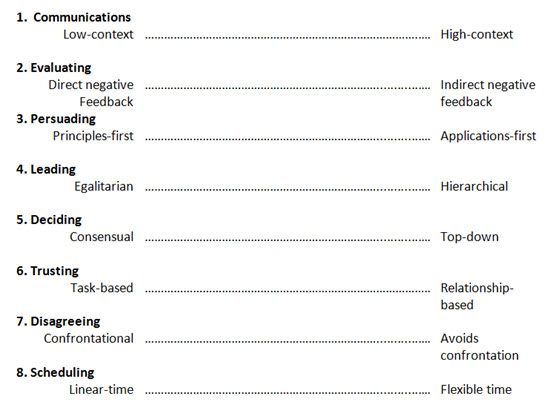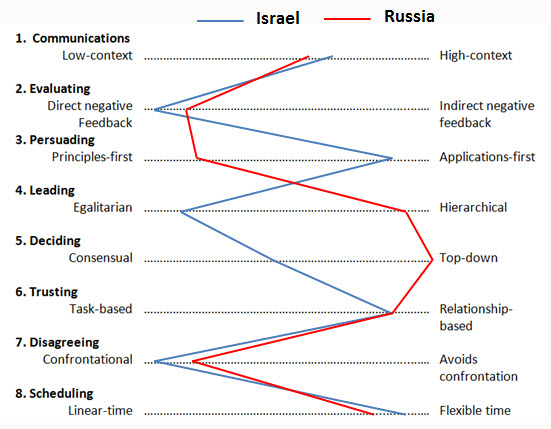One of my newest, favourite communication tools is a Culture Map. I first came across this better way to visualize cultural differences in Erin Meyer’s book, The Culture Map (published earlier this year). Here’s a short interview of Meyer, about her book:
(video not displaying? watch here, on YouTube)
The Culture Map
The Culture Map is a way to visualize and compare culture across 8 different dimensions.
If we apply the Culture Map map to two countries, we can visualize their general cultural tendencies; e.g.,
After seeing this visual, Vladimir Putin’s approval rating of 85% made eminent sense to me.
Different ways to apply a Culture Map
The Culture Map was developed based on Meyer’s work with international, cross-cultural teams. It’s application, of course, extends beyond that. Here’s three other applicable contexts:
Conflict culture. Apply, or customize, the Culture Map to disputes and/or conflicts between individuals. As a mediator, to me this is intuitive. Visualizing where each of the parties is coming from, along three or four different personal (cultural) dimensions, can lead to a ‘ah ha’ moment, for all concerned.
Team culture. Beyond virtual and/or international teams, any team comprised of individuals from different backgrounds and personal preferences can be better understood via a team culture visual. Variances and patterns between and/or across individuals will appear. This provides an opportunity to grow, as a team.
Organizational culture. Every organization has it’s culture. When culture is the problem, creating an alternative, more desirable culture, and mapping, visualizing, the gaps can be instructive. A way to effectively communicate; given that 75% of external stimuli we take in through our eyes.
Beyond The Culture Map
Coupling The Culture Map with Lionel Laroche’s excellent books serves up a great resource, gifts, for the cultural navigator.
I also mention Meyer’s work in my Virtual Collaboration e-course; another resource for working better, in our digitally connected world.
What is your go-to resource for visualizing interpersonal differences?



Speak Your Mind